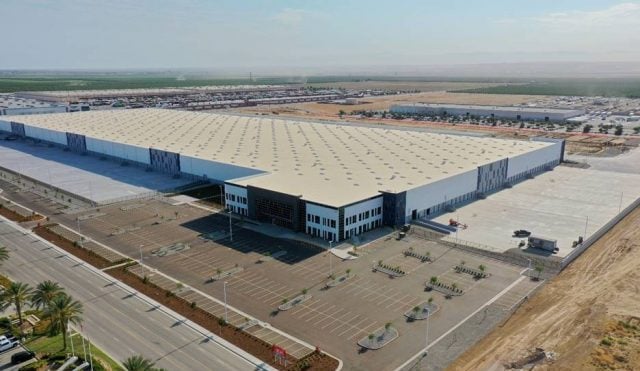ORLANDO—Orlando's retail sector saw strongly positive leasing activity in the first half of 2016. That's good news, but the better news is there's still room to run before any clouds roll in or the market contracts. In fact, one strategic asset just traded over over $120 million.
That's according to JLL's Florida Retail report, which launched at ICSC's Florida Deal Making Conference this week. The broad brush conclusion: For first time since 2008, the top 14 Florida retail cities are rising or peaking. Most have an occupancy above 90% with rents rising steadily for the past three years. In the last three years, retailers have leased 10.8 million square feet of space in the state.
Central Florida is finally feeling broad-based retail recovery. Orlando is one of the last markets in the state to see rents rise. Leasing activity in suburban areas has pushed rents up for the first time since the downturn. Daytona, Lakeland, Ocala and Port Saint Lucie have seen consistent improvement over the past 18 months, according to JLL's report.
“Orlando's residential population and tourism sector have increased dramatically over the past few years, drawing national and international retailers to open new locations in an effort to capture that growing customer base,” Justin Greider, a vice president of Retail at JLL, tells GlobeSt.com. “Asking rates will remain on the rise as retail space becomes more and more constrained.”
Meanwhile, West Florida is the hottest Florida region right now on the retail front. Tampa has experienced 14 straight quarters of positive retail absorption and the largest increase in rents year-to-date of $0.50 per square foot. The Sarasota-Bradenton market has more stability than it has witnessed in a decade, with retail rents exceeding pre-recession highs.
“The key theme emerging in Florida's retail sector is momentum,” says Greider. “While the recovery has commenced in major markets for several years, rents and occupancy had lagged behind in many secondary and tertiary markets of the state. Retailers were hesitant to move outside of core, class A markets—but that is changing now.”
Steady gains in the US economy have resulted in net positives for the multifamily sector—will this wave continue for the foreseeable future? What's driving development and capital flows? Join us at RealShare Apartments on October 19 & 20 for impactful information from the leaders in the National multifamily space. Learn more.
ORLANDO—Orlando's retail sector saw strongly positive leasing activity in the first half of 2016. That's good news, but the better news is there's still room to run before any clouds roll in or the market contracts. In fact, one strategic asset just traded over over $120 million.
That's according to JLL's Florida Retail report, which launched at ICSC's Florida Deal Making Conference this week. The broad brush conclusion: For first time since 2008, the top 14 Florida retail cities are rising or peaking. Most have an occupancy above 90% with rents rising steadily for the past three years. In the last three years, retailers have leased 10.8 million square feet of space in the state.
Central Florida is finally feeling broad-based retail recovery. Orlando is one of the last markets in the state to see rents rise. Leasing activity in suburban areas has pushed rents up for the first time since the downturn. Daytona, Lakeland, Ocala and Port Saint Lucie have seen consistent improvement over the past 18 months, according to JLL's report.
“Orlando's residential population and tourism sector have increased dramatically over the past few years, drawing national and international retailers to open new locations in an effort to capture that growing customer base,” Justin Greider, a vice president of Retail at JLL, tells GlobeSt.com. “Asking rates will remain on the rise as retail space becomes more and more constrained.”
Meanwhile, West Florida is the hottest Florida region right now on the retail front. Tampa has experienced 14 straight quarters of positive retail absorption and the largest increase in rents year-to-date of $0.50 per square foot. The Sarasota-Bradenton market has more stability than it has witnessed in a decade, with retail rents exceeding pre-recession highs.
“The key theme emerging in Florida's retail sector is momentum,” says Greider. “While the recovery has commenced in major markets for several years, rents and occupancy had lagged behind in many secondary and tertiary markets of the state. Retailers were hesitant to move outside of core, class A markets—but that is changing now.”
Steady gains in the US economy have resulted in net positives for the multifamily sector—will this wave continue for the foreseeable future? What's driving development and capital flows? Join us at RealShare Apartments on October 19 & 20 for impactful information from the leaders in the National multifamily space. Learn more.
Want to continue reading?
Become a Free ALM Digital Reader.
Once you are an ALM Digital Member, you’ll receive:
- Breaking commercial real estate news and analysis, on-site and via our newsletters and custom alerts
- Educational webcasts, white papers, and ebooks from industry thought leaders
- Critical coverage of the property casualty insurance and financial advisory markets on our other ALM sites, PropertyCasualty360 and ThinkAdvisor
Already have an account? Sign In Now
*May exclude premium content© 2024 ALM Global, LLC, All Rights Reserved. Request academic re-use from www.copyright.com. All other uses, submit a request to [email protected]. For more information visit Asset & Logo Licensing.









